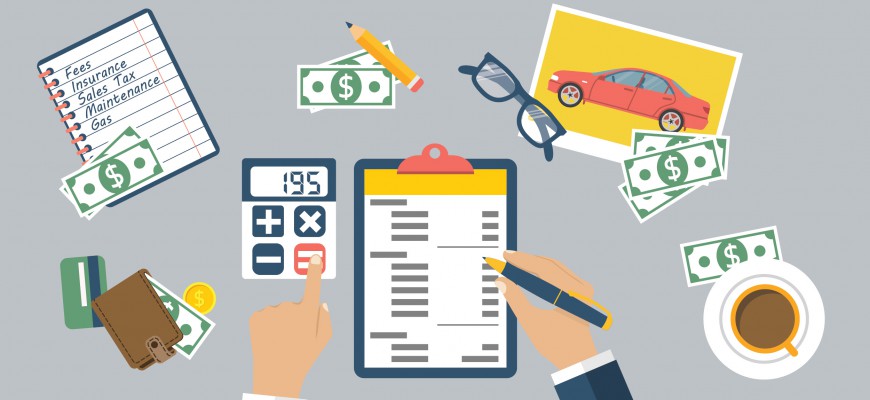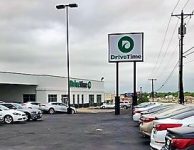Know Before You Go: Top Budgeting Tips for Car Shopping
When shopping for your next car, it can be easy to get excited about all the possibilities out there. Today’s cars can be decked out with all the latest features. Infotainment systems, backup cameras, heated seats, moon roofs and more are all great to have. However, they’re not always practical if you’re shopping on a budget.
Creating and sticking to a budget when car shopping can be tricky. It’s not always easy to know what you’ll wind up paying for in the end. That, mixed with the excitement of the purchase, has caused a lot of auto shoppers to stray from their budgets.
First Things First
The first step you need to take when shopping for a car on a budget is determining how much you can reasonably afford to pay. If you don’t already have a household budget, now is a good time to create one. You’ll first need to determine a few things, like your monthly take-home pay, your monthly expenses and the other ways you use your money.
“You should aim to spend between 10 and 15 percent of your income on auto-related expenses.”
Once you have determined how much is being spent each month and where, you can calculate how much you are able to spend on your auto purchase.
You should determine two numbers when creating a car shopping budget: how much you can spend each month and how much you can spend overall. CNN Money pointed out that you should aim to spend between 10 and 15 percent of your monthly income on auto-related expenses. The total amount you can spend overall should be based on this amount.
While you are calculating how much you can reasonably spend on your car each month, you might want to keep this information to yourself while you’re at the dealership. Autotrader explained that focusing too heavily on the monthly payment can hinder your ability to make a smart decision. It’s better to focus on the total cost of the car instead.
Know the Cost
When you arrive at the dealership, you’ll likely see a lot full of cars, each with a price scrawled across the windshield. Don’t be fooled by this: You will likely be paying more than that number. Fees, taxes, insurance and maintenance will certainly push the real price higher.
Be sure to take into consideration everything that will add to the cost:
1. The base price–This is the price written on the car’s window. You may be able to negotiate a lower price than what is listed, but expect to pay this much, just to be on the safe side.
2. Optional features–Save these decisions for last when you know how much money you have left over from your initial budget.
3. Fees, like a title fee, documentation fee or destination charge–CNN Money noted that car buyers can expect to pay between $50 and $125 on fees.
4. Sales tax–This depends on where you live. For instance, if you live in Oregon, there is no sales tax, but if you live in Louisiana, the sales tax is 8.91 percent, according to Tax Foundation.
5. Insurance–Your insurance rate will depend on a wide variety of factors, but most states have insurance rates between $1,200 and $1,500 annually, or between $100 and $150 per month, according to Value Penguin.
6. Interest payments on the auto loan–This will increase the amount you pay over time, and these rates change frequently. According to Bankrate, the average interest rate on a used car loan for a 36-month term was 4.58 percent during the week ending July 13, 2016.
7. Maintenance and repairs–Many of these costs will be predictable. For instance, you’ll need to make regular oil changes, which will cost between $20 and $50, depending on where you live and what type of oil you need. But it’s also a good idea to have some money in reserve for surprise repair needs. Autotrader suggested setting aside 5 percent of the cost of the car for emergency repairs.
8. Gas–This will depend on how much you will drive your car. The Energy Information Administration estimated that the average American will spend just over $2,000 on gas in 2016, or around $170 per month.
Taking these extra costs into consideration is important when you are shopping for a car. It’s easy to go over budget without realizing it. But if you are smart about your purchase and do your research, you will be able to buy and maintain a car for an affordable price.







That´s a great article. Simple and easy to read. Thanks for sharing
Nice Blog Post, looking for the next update.
Drive time is a misleading and corrupt financial company, yes they say they provide gap insurance but after your full coverage insurance company submits their payment they don’t tell you that u have to wait 4 to 6 weeks at least be for they process their part leaving you with no transportation to work or for the care of your children, they steal hard working Americans money and tell you they will take care of their customers but they are complete liars and crooks.
Hello Tammy,
Thank you for reaching out to voice your concerns. I am deeply sorry to hear that your vehicle has recently been involved in a total loss, and I apologize for any inconvenience resulting from this situation.
While I understand the frustrating nature of this situation, please keep in mind that GAP insurance claims are handled by both the loan administrator and the GAP administrator. Therefore, any concerns regarding the speed at which your GAP claim is being resolved should be discussed with your lien holder directly.
Respectfully,
Jacob – Customer Relations